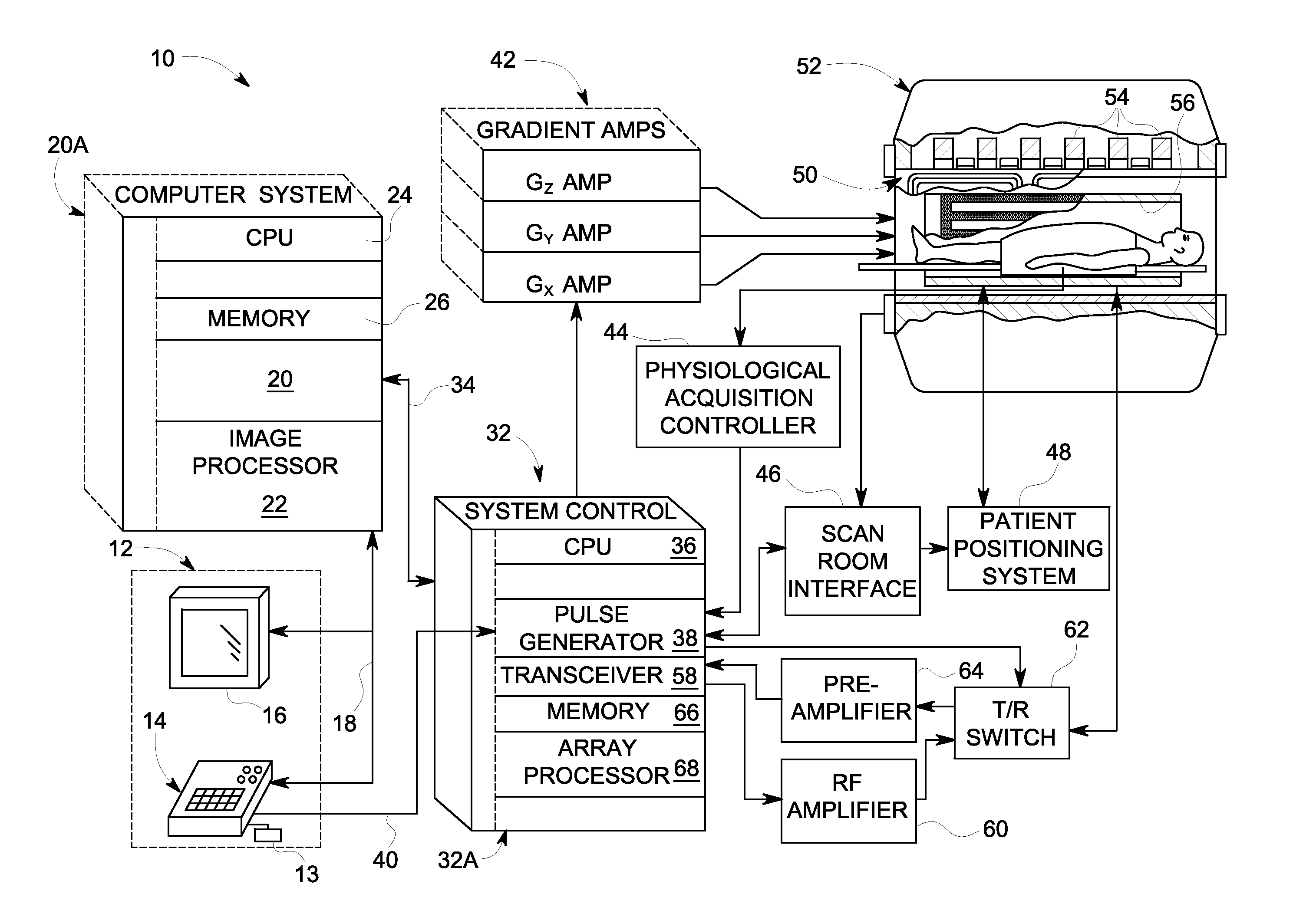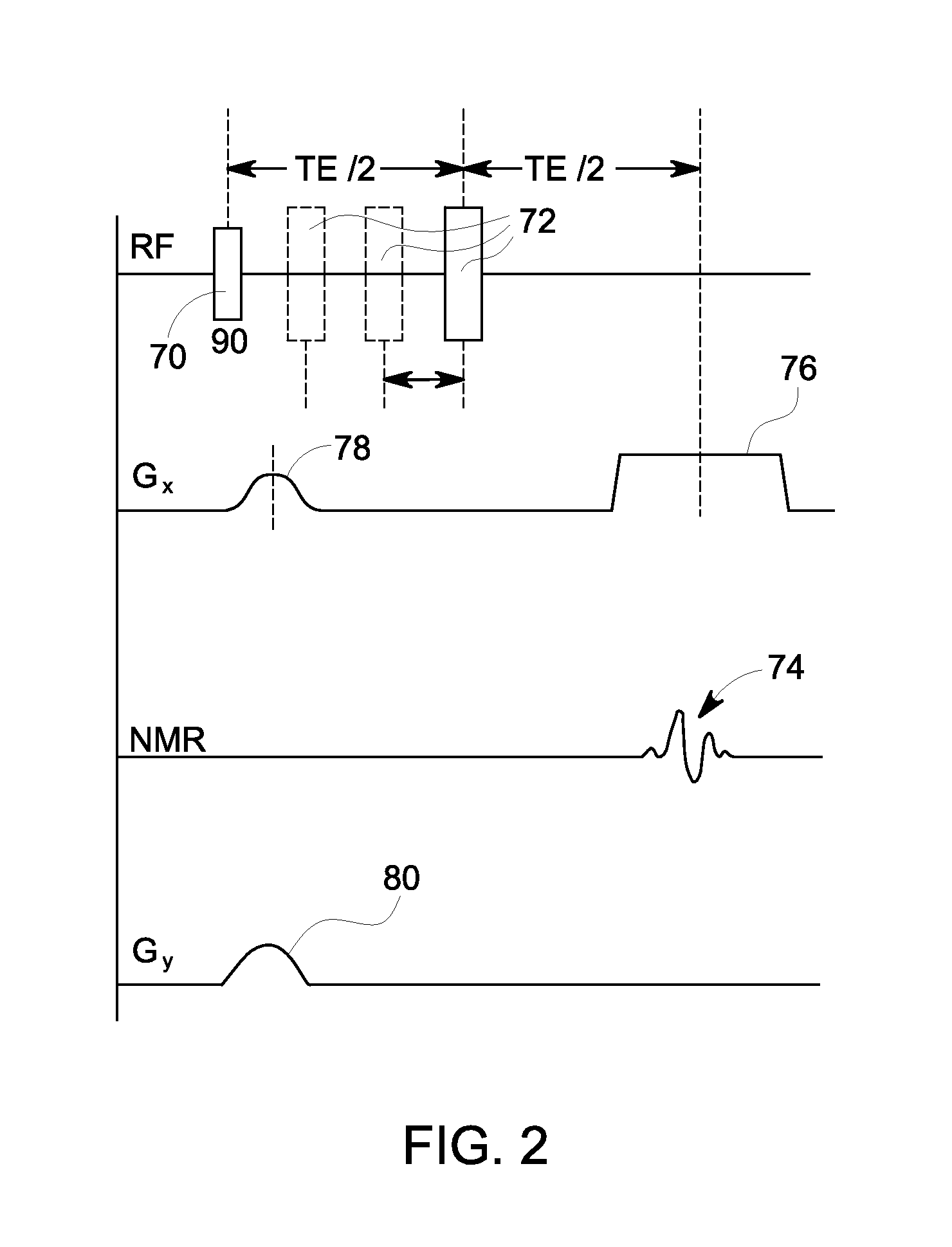System and method for fat suppression in chemical shift based water-fat separated mr imaging
a chemical shift and water-fat separation technology, applied in the field of systems and methods of nuclear magnetic resonance (nmr) imaging, can solve problems such as inability to meet clinical diagnoses, and inability to provide uniform suppression
- Summary
- Abstract
- Description
- Claims
- Application Information
AI Technical Summary
Benefits of technology
Problems solved by technology
Method used
Image
Examples
Embodiment Construction
[0018]A system and method is provided for separating the NMR signal contributions from a plurality of different species having different chemical shifts. According to embodiments of the invention, a technique is performed to achieve complete fat suppression in water-only MR images acquired by chemical-shift based water-fat separation methods. The technique can be employed on all chemical-shift based imaging methods including 2-point, 3-point, and more than 3 points, with the complete fat suppression provided by the technique increasing the contrast between water and fat in the water-only images.
[0019]While embodiments of the invention are described below with respect to a technique for water-fat separation and fat suppression, it is recognized that such a technique can also be employed for suppressing signals of other selected species besides water and fat. As such, the scope of embodiments of the invention is not meant to be limited merely to water-fat separation and fat suppressio...
PUM
 Login to View More
Login to View More Abstract
Description
Claims
Application Information
 Login to View More
Login to View More - R&D
- Intellectual Property
- Life Sciences
- Materials
- Tech Scout
- Unparalleled Data Quality
- Higher Quality Content
- 60% Fewer Hallucinations
Browse by: Latest US Patents, China's latest patents, Technical Efficacy Thesaurus, Application Domain, Technology Topic, Popular Technical Reports.
© 2025 PatSnap. All rights reserved.Legal|Privacy policy|Modern Slavery Act Transparency Statement|Sitemap|About US| Contact US: help@patsnap.com



